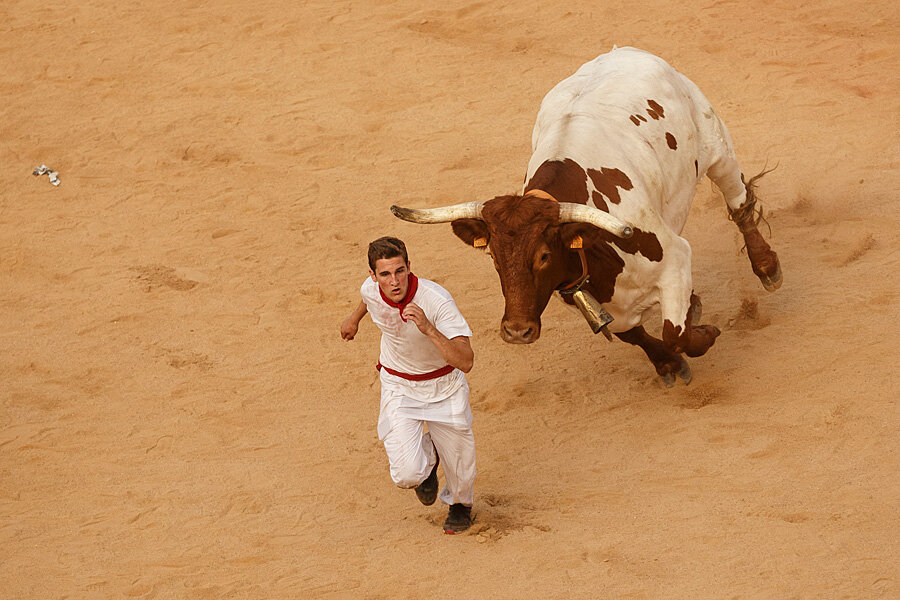Spain's running of the bulls festival begins. Will tradition persist?
Loading...
The San Fermin Festival in Spain began on Tuesday, a celebration made famous by the “Running of the bulls” event. As part of the festival, participants run with the “toros” along a narrow 850-meter course into a bull ring, where the animals are then killed in bullfights by professional matadors. A bull run and fight occur each day of the nine-day festival. However, the persistence of the tradition is uncertain, as support for bullfighting has dwindled in Spain due to economic circumstances and differing perspectives between young and older generations on the custom.
The origins of the festival date to the Middle Ages. The running of the bulls allegedly began as a way to hurry the cattle to the bull pen, in anticipation of the fight. The bull run begins at 8 a.m. each morning of the festival, and is referred to as the “encierro,” which translates to “confinement.” The run itself usually lasts for a few minutes.
In 1987, Kathy White reported for The Christian Science Monitor that, “Many of the ruling Socialists are bullfight aficionados.” At the time, a poll conducted at Madrid's San Isidro festival, showed that 40 percent of those surveyed thought corridas (races) should be banned. In 2010, Catalonia became the first major region of Spain to ban bullfighting, with laws taking effect in 2012.
Spain’s interior ministry reported that between 2007 and 2010, the number of bullfights held across Spain fell by 34.5 percent.
Attendance in subsequent years has continued to falter, with the number of bull fights falling another 40 percent between 2008 and 2013, according to The Independent. The article reported that in 2008, some 3,295 corridas were held across the country; in 2013, there were 1,997.
However, the Spanish government has continued to support the historic tradition. Legislation designating Spain's national tradition of bullfighting as part of "cultural heritage worthy of protection" was passed in 2013. This law ran in direct opposition to the laws passed in the Catalonia region.
A total of 15 people have been killed by gorings since records from the festival have been kept, beginning in 1924. In 2011, Human Society International reported that the countries where bullfighting still took place included Spain, France, Portugal, Mexico, Colombia, Venezuela, Peru, and Ecuador. At the time, Argentina, Canada, Cuba, Denmark, Italy and the United Kingdom had already banned the practice.








